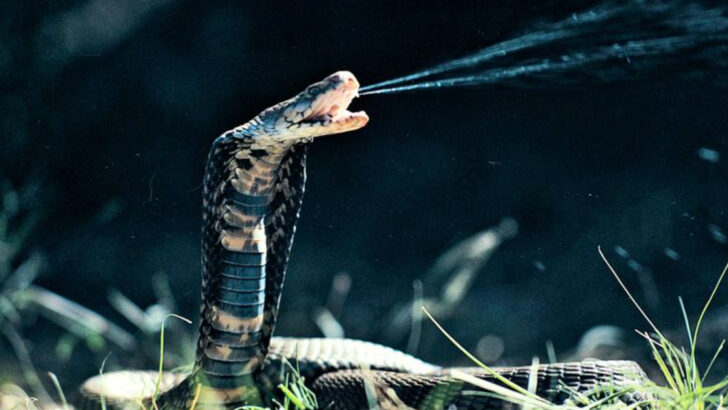Some snakes don’t just hunt—they perform.
Forget the silent stalkers of the grasslands or the textbook constrictors. These are the oddballs, the curveballs, the slippery weirdos of the reptile world. They lure, they leap, they pretend to be other animals. Some even play dead before dinner.
One snaps its jaws like a spring-loaded trap.
Another waves its tail like a worm to bait its prey.
A few take the whole “ambush predator” thing to Oscar-worthy levels.
These aren’t your everyday slitherers.
They’re the surprise artists of the snake world—redefining what it means to catch a meal. Ready to meet the creepiest, cleverest hunters hiding in plain sight?
Let’s peel back the scales and get weird.
Tentacled Snake
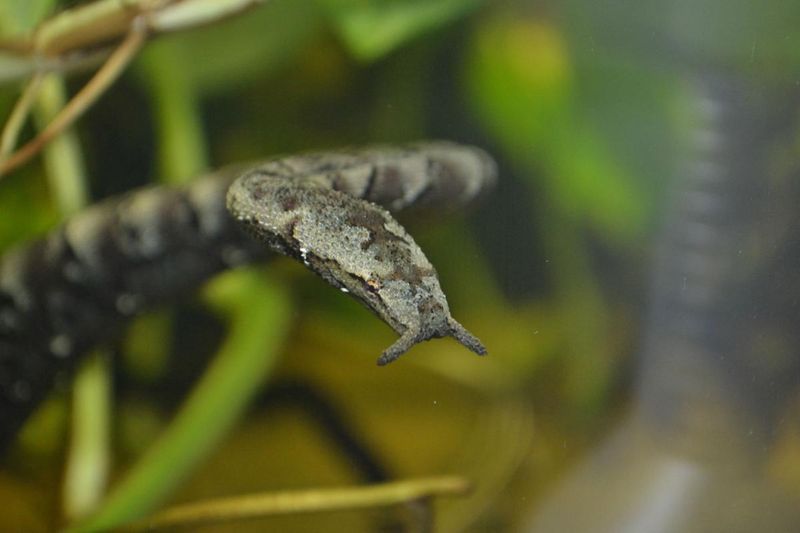
The tentacled snake, native to Southeast Asia, employs a hunting technique that’s both bizarre and effective. With tentacle-like appendages on its snout, it mimics the appearance of algae. Fish, assuming it’s safe, swim closer, only to find themselves ensnared in the snake’s quick strike.
This snake’s ability to anticipate the direction a fish will flee is fascinating. It triggers the fish’s escape reflex, causing it to dart right into the snake’s mouth. Its patience and precision are unmatched in the reptile world, making it a true master of disguise.
King Cobra
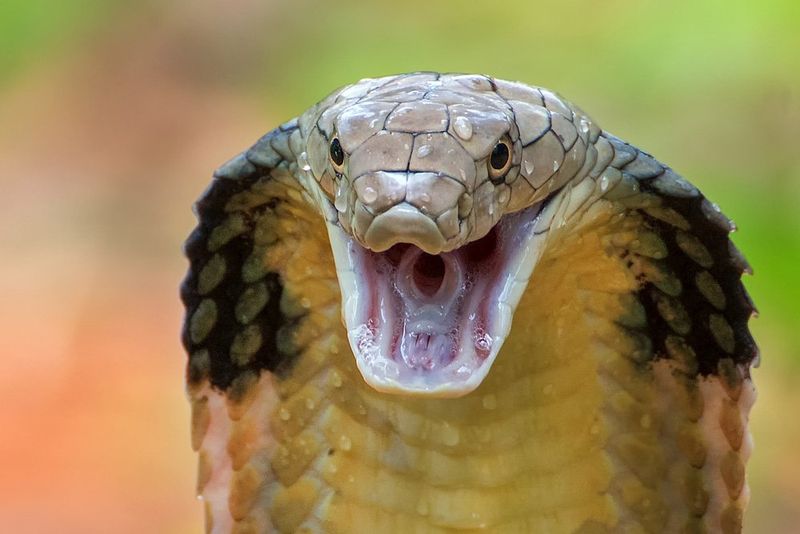
The king cobra, revered and feared, has a hunting method as regal as its name. Found in India and Southeast Asia, it preys primarily on other snakes, showcasing its dominance in the serpent realm.
Its ability to stand up and spread its iconic hood serves as both intimidation and a tactical advantage. By towering over its prey, it strikes with lethal precision. This snake’s intelligence is notable, as it can ‘remember’ past interactions, adjusting its behavior accordingly. A king cobra’s hunt is a calculated and awe-inspiring event.
Spitting Cobra
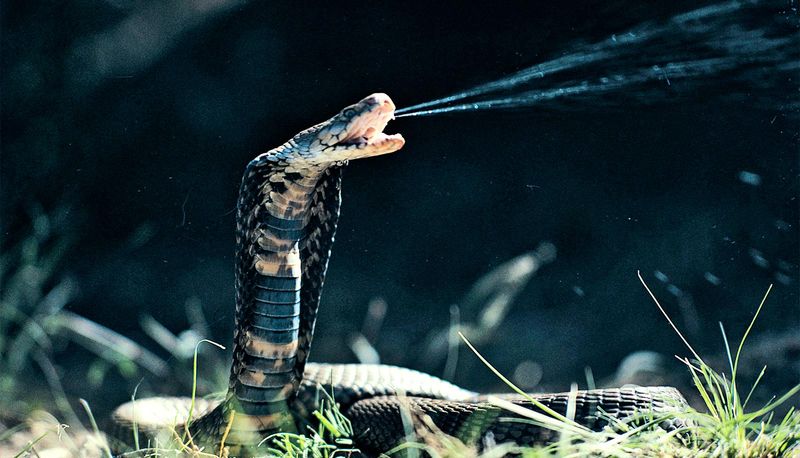
Spitting cobras, found in Africa and Asia, have developed a unique defense and hunting mechanism. Unlike other snakes, they can eject venom from their fangs, aiming for the eyes of predators or prey.
This venom can cause temporary blindness, giving the cobra an advantage. The accuracy of their spit is remarkable, able to hit targets several feet away. This ability not only aids in hunting but also serves as a formidable deterrent. It’s a vivid example of evolution’s creativity, ensuring their survival in harsh environments.
African Egg-Eating Snake
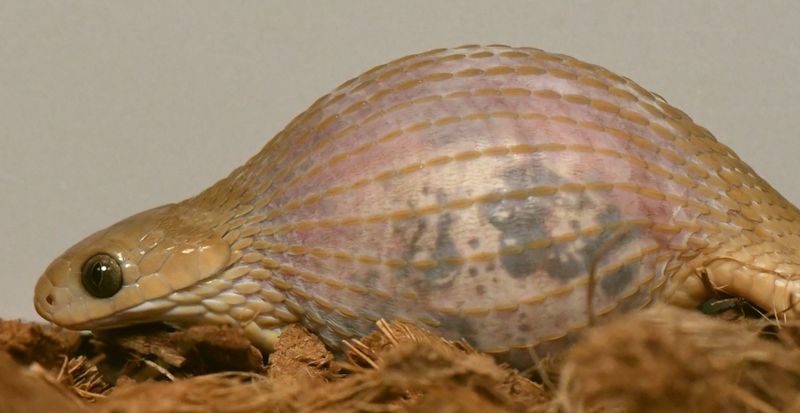
In the lush landscapes of Africa, the egg-eating snake showcases its unique dietary preference. Unlike most snakes, it consumes eggs, using specialized vertebrae to crack them open.
This snake swallows eggs whole, flexing its muscles to break the shell internally. The broken shell is then regurgitated, leaving the nutritious contents to be digested. Its hunting technique is as gentle as it is efficient, avoiding confrontation with living prey. A fascinating adaptation, it highlights the diverse strategies snakes employ to thrive.
Boa Constrictor

The boa constrictor, found in Central and South America, is renowned for its powerful hunting technique. Rather than using venom, it relies on its muscular body to suffocate prey.
When a potential meal is detected, the boa swiftly wraps around it, each coil tightening with every exhale of the prey. This method ensures a swift and effective kill. The boa’s patience during the hunt is legendary, lying in wait for hours until the perfect opportunity arises. Its methodical approach is a testament to the diversity of predation in snakes.
Gaboon Viper
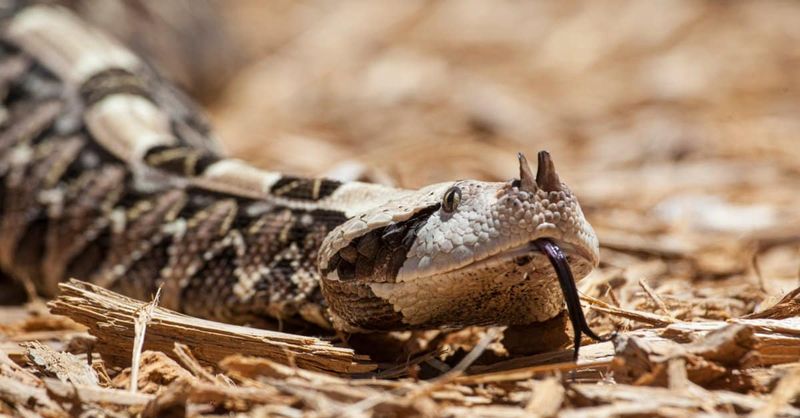
The Gaboon viper, with its striking pattern, relies heavily on camouflage. Found in the rainforests of Africa, it blends seamlessly with the forest floor.
Its hunting technique involves lying motionless, waiting for unsuspecting prey to wander by. With the longest fangs of any snake, it delivers a potent venom with a quick strike. The Gaboon viper’s strategy is one of patience and stealth, allowing it to ambush effectively. This method highlights the snake’s ability to adapt to its environment, making it a formidable predator.
Green Tree Python

High in the trees of New Guinea, the green tree python exhibits an arboreal hunting technique. With its bright green scales, it remains inconspicuous among the foliage.
This snake uses its prehensile tail for balance, striking with precision when prey comes into view. Its ambush style is complemented by a remarkable ability to sense heat, detecting warm-blooded prey even in the dark. The green tree python’s hunting is a blend of patience and speed, showcasing the ingenuity of snake evolution.
Hognose Snake
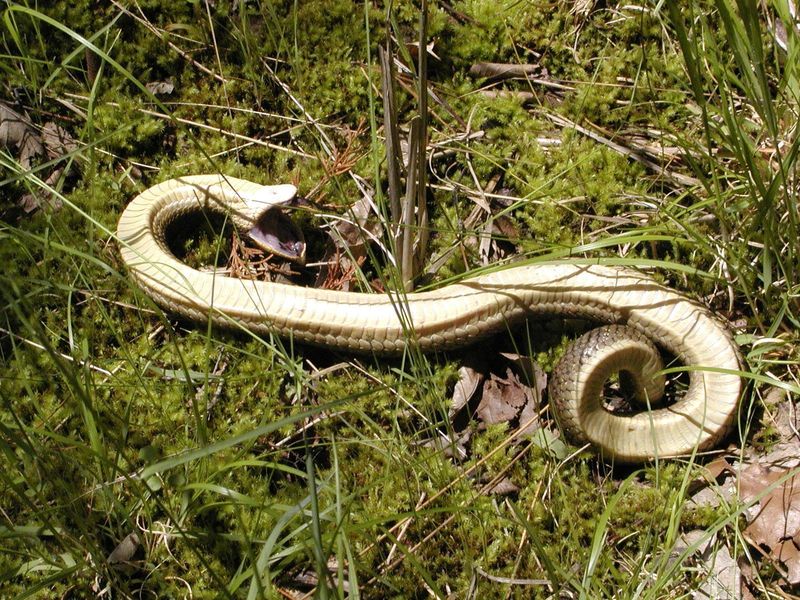
The hognose snake is a master of deception. Found in North America, it employs bluffing tactics that are as amusing as they are effective.
When threatened, it flattens its head, mimicking a cobra. If this doesn’t deter the predator, it plays dead, emitting a foul smell to enhance the act. In hunting, it specializes in toads, using enlarged rear teeth to deflate their prey’s natural defense of puffing up. The hognose snake’s theatrics are both a defense and a strategy, ensuring its survival in diverse habitats.
Black Mamba
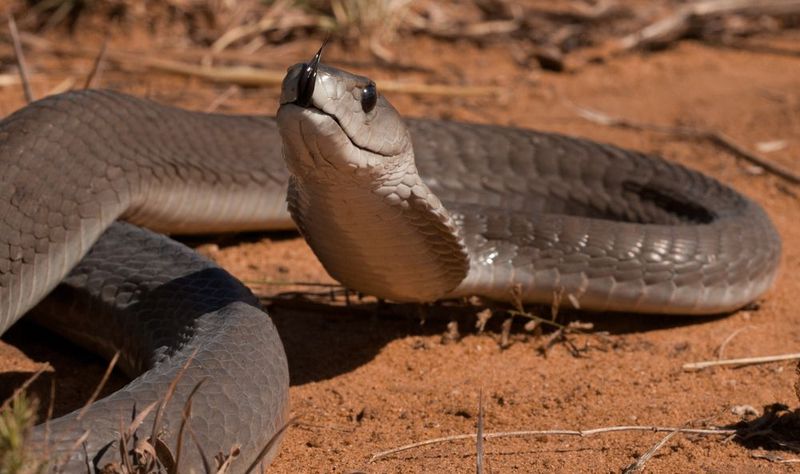
The black mamba, Africa’s notorious speedster, is both feared and respected. Known for its swiftness, it can reach speeds of up to 12 mph.
Its hunting technique capitalizes on this speed, pursuing prey with relentless determination. The black mamba’s agility is matched by its potent venom, capable of immobilizing prey quickly. Its reputation extends beyond its deadly efficiency; it’s also intelligent, capable of complex navigation through its territory. The black mamba’s hunting prowess is a masterclass in speed and strategy.
Rattlesnake
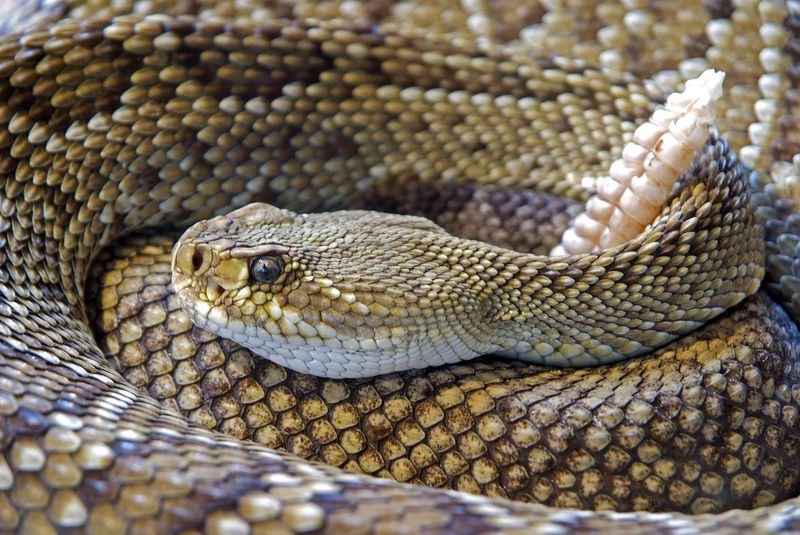
Rattlesnakes, iconic in North America, use their rattle as a warning and hunting aid. The sound deters potential threats, while their heat-sensing pits allow them to detect warm-blooded prey.
Once located, their strike is incredibly swift, injecting venom that immobilizes swiftly. Their technique is a combination of stealth and precision, often waiting patiently before making the decisive move. The rattlesnake’s ability to adapt to various environments further cements its status as a formidable predator, blending natural instinct with evolutionary advantages.
Bushmaster
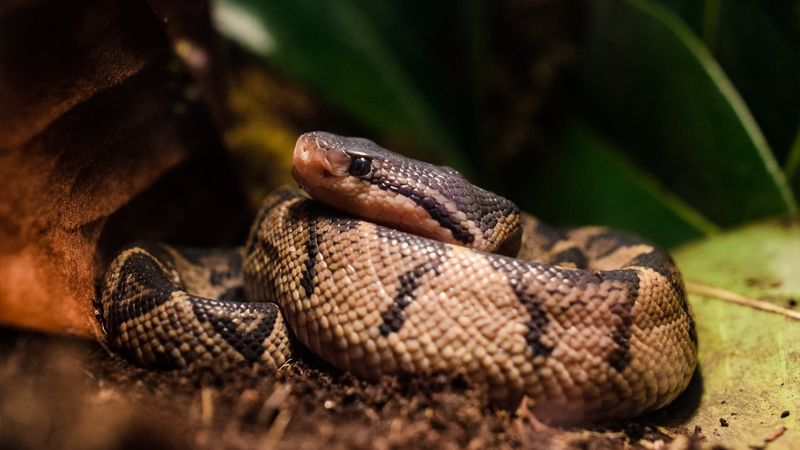
The bushmaster, native to Central and South America, is a giant among vipers. Its hunting method is a blend of patience and power.
Lying motionless for days, it waits for the perfect moment to strike. When prey approaches, its long fangs deliver a potent venom with remarkable speed. The bushmaster’s ability to remain undetected until the last moment is a testament to its evolutionary success. Its hunting strategy, though simple, is highly effective, allowing it to thrive in its rainforest habitat.
Anaconda
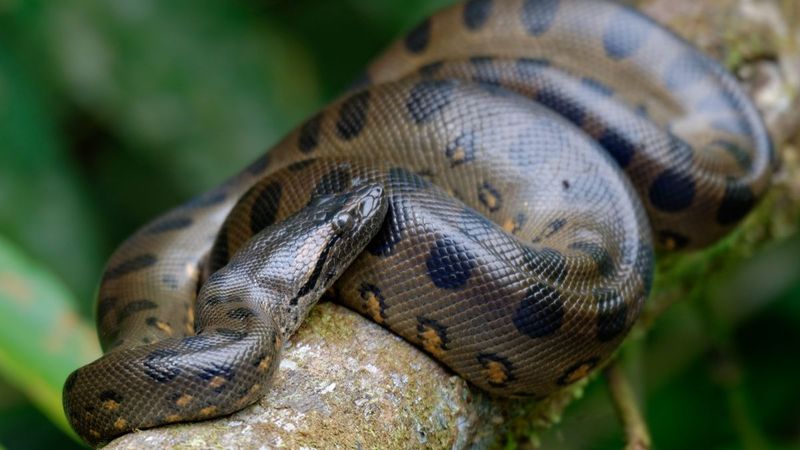
Anacondas, the giants of the snake world, employ brute strength in their hunting techniques. Found in South America’s swamps and rivers, they are formidable predators.
Using their immense size, they subdue prey by coiling around it, similar to the boa constrictor. Their aquatic environment provides a tactical advantage, allowing them to ambush prey with precision. Anacondas’ ability to take down large prey, including caimans, highlights their role as apex predators. Their hunting method is a blend of stealth, strength, and strategic positioning.
Sea Snake
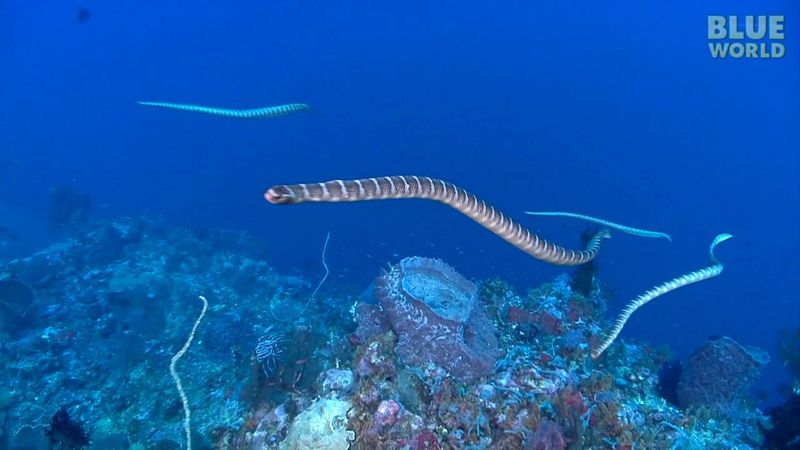
Sea snakes, masters of the ocean, exhibit unique hunting techniques adapted to their aquatic life. Found in warm coastal waters, they prey on fish, using venom to subdue swiftly.
Their flattened tails aid in swimming, enhancing their agility underwater. Sea snakes’ ability to hold their breath for extended periods allows them to hunt effectively below the surface. The combination of venom, agility, and specialized adaptations makes them adept hunters in the diverse marine environment. Their existence showcases the remarkable adaptability of snakes.

